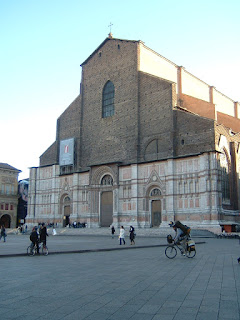Ground-breaking academic paved the way for women
 |
| A portrait of the physicist Laura Bassi, thought to have been painted in 1732 |
She had enjoyed a remarkable career, becoming the first woman to earn a Chair in Science at a university anywhere in the world.
When she was just 13 her family’s physician had recognised her potential and took charge of her education.
When she was 20 he invited philosophers from the University of Bologna along with the Archbishop of Bologna, who later became Pope Benedict XIV, to examine her progress.
They were all impressed and Bassi was admitted to the Bologna Academy of Sciences as an honorary member, the first female ever to be allowed to join.
Her theses at the university showed influences of Isaac Newton’s work on optics and light. She was a key figure in introducing his ideas about physics to Italy.
When she received her degree from the university there was a public celebration in Bologna.
Another of her theses about the property of water led to her being awarded the post of Professor of Physics at the university.
As a woman, she was not allowed to teach at the university so she gave lessons and did experiments in her own home.
She was appointed to the Chair of experimental physics at Bologna University in 1776.
She died two years later, having made physics a lifelong career and broken new ground for women in academic circles.
A street in Bologna and a crater on Venus are named after her.
 |
| The Basilica of San Petronio in the centre of Bologna, where Laura Bassi married |
Laura Bassi married Giovanni Giuseppe Veratti, a professor of natural philosophy at the University of Bologna in 1738 at the Basilica of San Petronio in Bologna. A street in the city to the south of the university is now named Via Laura Bassi Veratti in honour of her.
Bologna hotels by Booking.com
Travel Tip:
The Basilica di San Petronio, where Laura Bassi was married, is the main church of Bologna, located in Piazza Maggiore in the centre of the city. It is the largest brick-built Gothic church in the world. Building work began on the church in 1390 and it was dedicated to San Petronio, who had been the Bishop of Bologna in the fifth century. The facade was designed by Domenico da Varignana and started in 1538 by Giacomo Ranuzzi but was never finished. Despite being Bologna’s most important church, San Petronio is not the city’s cathedral. This is the Duomo di San Pietro, which stands nearby on Via Indipendenza. In the 16th century, the basilica staged the coronation of Charles V to Holy Roman Emperor by Pope Clement VII.
More reading:
How astronomer Caterina Scarpellini discovered a new comet
The particle physicist who scored a first for women in science
Margherita Hack, the astrophysicist who tried to make science fun
Also on this day:
Travel Tip:
The Basilica di San Petronio, where Laura Bassi was married, is the main church of Bologna, located in Piazza Maggiore in the centre of the city. It is the largest brick-built Gothic church in the world. Building work began on the church in 1390 and it was dedicated to San Petronio, who had been the Bishop of Bologna in the fifth century. The facade was designed by Domenico da Varignana and started in 1538 by Giacomo Ranuzzi but was never finished. Despite being Bologna’s most important church, San Petronio is not the city’s cathedral. This is the Duomo di San Pietro, which stands nearby on Via Indipendenza. In the 16th century, the basilica staged the coronation of Charles V to Holy Roman Emperor by Pope Clement VII.
More reading:
How astronomer Caterina Scarpellini discovered a new comet
The particle physicist who scored a first for women in science
Margherita Hack, the astrophysicist who tried to make science fun
Also on this day:





